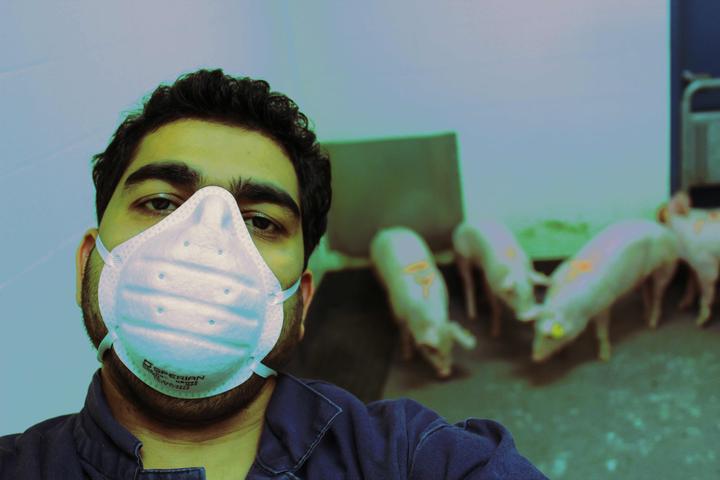Pathogenesis of Picornavirus
Apr 27, 2016

Senecavirus A is a re-emergiging disease of swine. It causes vesicular disease in swine. Despite detection of Senecavirus A nucleic acid in pigs with vesicular disease, attemps to establish causal relationship had failed. We were able to reproduce the disease in swine and we have published a detail pathogenesis of Senecavirus A in this paper. We have also showed that the virus establishes persistent infection in infected animal.
Publications
Persistent Infection and Transmission of Senecavirus A from Carrier Sows to Contact Piglets
Abstract Senecavirus A (SVA) is a picornavirus that causes acute vesicular disease (VD), that is clinically indistinguishable from foot-and-mouth disease (FMD), in pigs. Notably, SVA RNA has been detected in lymphoid tissues of infected animals several weeks following resolution of the clinical disease, suggesting that the virus may persist in select host tissues.
Mayara F. Maggioli,
Maureen H. V. Fernandes,
**Lok R. Joshi**,
Bishwas Sharma,
Megan M. Tweet,
Jessica C. G. Noll,
Fernando V. Bauermann,
Diego G. Diel
Adaptive immune responses following Senecavirus A infection in pigs
Abstract
Senecavirus A (SVA), an emerging picornavirus of swine, causes vesicular disease (VD) that is clinically indistinguishable from foot-and-mouth disease (FMD) in pigs. Many aspects of SVA interactions with the host and the host immune responses to infection, however, remain unknown.
Mayara F Maggioli,
Steve Lawson,
Marcelo de Lima,
**Lok R Joshi**,
Tatiane C Faccin,
Fernando V Bauermann,
Diego G Diel
Pathogenesis of Senecavirus A in finishing pigs
Abstract
Senecavirus A (SVA) is an emerging picornavirus that has been associated with vesicular disease and neonatal mortality in swine. Many aspects of SVA infection biology and pathogenesis, however, remain unknown.
**Lok R Joshi**,
Maureen HV Fernandes,
Travis Clement,
Steven Lawson,
Angela Pillatzki,
Talita P Resende,
Fabio A Vannucci,
Gerald F Kutish,
Eric A Nelson,
Diego G Diel

